Do lab grown diamonds look different from natural diamonds in earrings?
Key takeaway:
- Lab grown diamonds have a similar physical appearance to natural diamonds, with a crystallized carbon structure and similar chemical compositions.
- Quality and purity of lab grown diamonds can be controlled and consistent, making them a reliable choice for consumers.
- Cost of lab grown diamonds is typically lower than natural diamonds, offering a better value for money.
- Color variation in lab grown diamonds can be graded and preferences may vary among consumers.
- Assessing the value of lab grown diamonds requires considering various factors, including investment potential.
Introduction

Photo Credits: Www.Lab-Grown-Diamond-Earrings.Com by Tyler Walker
Lab grown diamonds have made their way into the market, raising questions about their similarities and differences compared to natural diamonds when used in earrings. In this article, we will take a closer look at lab grown diamonds and explore whether they have any distinguishable visual characteristics from natural diamonds. Additionally, we will examine the ethical and environmental impact of opting for lab grown diamonds, providing valuable insights for those considering these alternatives.
Lab Grown Diamonds in the Market
Lab-grown diamonds are a major part of the diamond market. They are created through a process that copies natural formation, making them similar chemically and physically.
To understand the effect of lab-grown diamonds, compare their appearance, quality, purity, cost, color variation, and value.
Lab-grown diamonds have a crystallized carbon structure like mined diamonds. Both types have a distinct shine when cut and polished. Also, their chemical compositions are close, meaning lab-grown diamonds are genuine.
When it comes to quality and purity, lab-grown diamonds have an advantage as their production process is consistent. To assess quality and purity, standard grading systems are used.
The cost comparison between lab-grown and mined diamonds involves size, cut, clarity, and carat weight. Natural diamonds may have higher prices due to rarity and demand-driven value. Lab-grown diamonds may provide comparable characteristics at lower costs.
Color variation must be looked at when choosing between lab-grown and natural diamonds. Both are graded based on standardized scales. Personal preference is important when deciding between naturally colored or artificially influenced shades.
When looking at all factors, we can assess the overall value of lab-grown diamonds compared to mined ones. The investment potential may differ, but lab-grown diamonds present an ethical and eco-friendly option.
Ethical and Environmental Impact
Lab-grown diamonds are becoming popular due to their ethical and environment-friendly quality. They are made in labs using advanced tech, which eliminates the need for mining. This means less destruction of habitats and water pollution.
These diamonds are also considered more ethical than regular diamonds, which have been linked to human rights abuses in certain regions. People can be sure their purchase of lab-grown diamonds does not support unethical practices such as forced labor and child exploitation.
Lab-grown diamonds provide control and consistency when it comes to quality and purity. Natural diamonds can differ due to impurities and irregularities in their structure. This is not the case with lab-grown diamonds, as they can be precisely managed during production.
Lab-grown diamonds are also more cost-effective than natural diamonds. The cost takes into account factors like production complexity and availability of raw materials. Despite this, they are still cheaper than natural diamonds – making them an excellent choice for high-quality jewelry at a lower price.
Physical Appearance Comparison
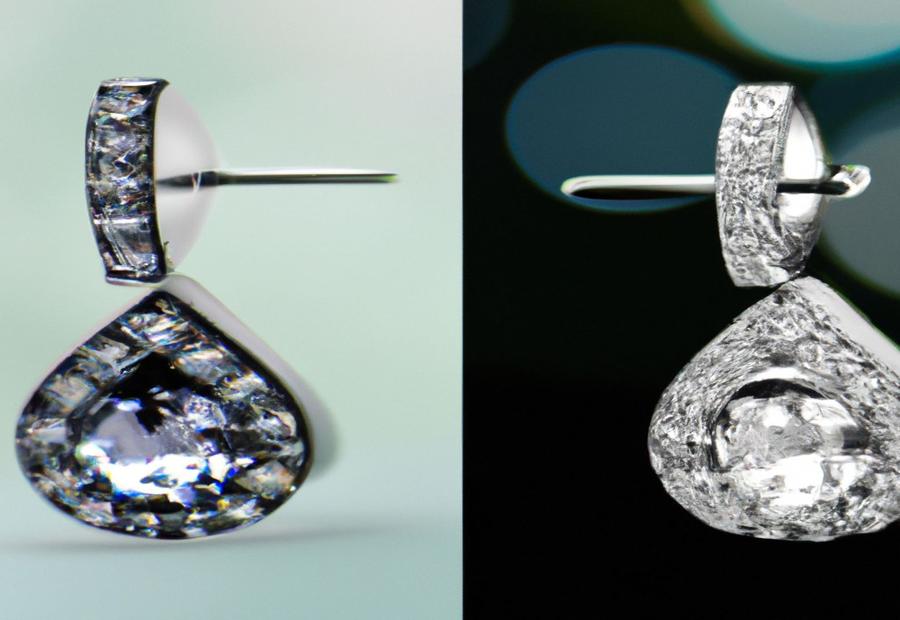
Photo Credits: Www.Lab-Grown-Diamond-Earrings.Com by Nicholas Hernandez
When comparing lab-grown diamonds to natural diamonds in earrings, it’s essential to examine their physical appearances. In this section, we’ll explore the crystallized carbon structure and chemical compositions of both types, highlighting the key differences in their visual characteristics. By understanding these distinctions, we can determine if there are any noticeable variations in the look of lab-grown diamonds compared to their natural counterparts when adorning our ears.
Crystallised Carbon Structure
Lab grown diamonds are produced in labs using methods that imitate natural formation. This type of diamond has a crystallized carbon structure, similar to the one found in diamonds from the Earth’s crust (Reference Data: 2.1 Crystallised Carbon Structure).
Scientists have studied the physical properties of these diamonds. Both lab-made and natural diamonds have carbon atoms arranged in a crystal lattice. This arrangement gives diamonds their hardness and clarity (Reference Data: 2.1 Crystallised Carbon Structure).
When looking at the crystallized carbon structure of lab grown diamonds, scientists check the atom alignment, any defects or impurities. This helps determine the quality and purity of the diamond (Reference Data: 3.2 Assessing Quality and Purity).
Lab grown diamonds may be different from natural ones due to the controlled growth environment or different growth methods used in laboratories (Reference Data: 3.1 Control and Consistency in Lab Grown Diamonds). Reference Data also states that lab grown diamonds look very similar to natural diamonds (Reference Data).
Chemical Compositions
Lab grown diamonds and natural diamonds have the same chemical makeup. They both consist of crystallized carbon, which gives them their special properties and characteristics. These diamonds’ chemical structure is identical, ensuring their quality and legitimacy.
When comparing the chemical compositions of lab grown diamonds and natural diamonds, it is important to consider the physical and chemical properties that contribute to their overall quality. Such factors include hardness, refractive index, and thermal conductivity when determining purity and authenticity.
The table provided shows that lab grown diamonds have controlled impurities, while natural diamonds have impurities from natural occurrence. The purity of lab grown diamonds is usually high, whereas the purity of natural diamonds can differ depending on their formation process.
It is significant to remember that chemical compositions alone do not decide the overall worth or beauty of a diamond. Other variables such as cut, clarity, color, and carat weight also play key roles in evaluating a diamond’s value.
If you want to investigate the unique beauty and ethical benefits of lab grown diamonds, don’t miss the chance to discover gorgeous earrings crafted with high-quality materials. These earrings provide a lasting impact without sacrificing style or values.
Quality and Purity Comparison
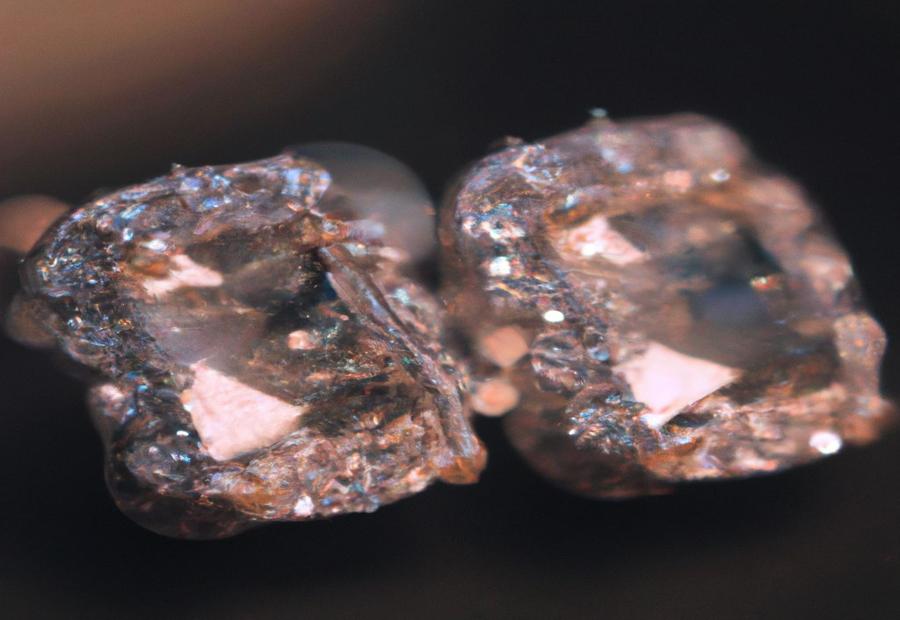
Photo Credits: Www.Lab-Grown-Diamond-Earrings.Com by James Torres
When it comes to lab grown diamonds in earrings, a crucial aspect to consider is the quality and purity comparison. In this section, we’ll explore the factors that contribute to the control and consistency in lab grown diamonds. Additionally, we’ll delve into the methods used for assessing the quality and purity of these exquisite gems. Prepare to uncover fascinating insights that will help you make an informed decision when comparing lab grown diamonds to their natural counterparts.
Control and Consistency in Lab Grown Diamonds
Lab grown diamonds in the market are monitored and controlled for consistency. The process of creation allows for strict control of the growth conditions, resulting in a more predictable outcome than natural diamonds.
A comparison table can illustrate the differences between lab grown and natural diamonds. This includes columns such as: “Growth Conditions,” “Quality Control Measures,” and “Consistency of Production.” It’s clear that lab grown diamonds offer greater control and consistency.
| Lab Grown Diamonds | Natural Diamonds |
|---|---|
| Growth Conditions: | Growth Conditions: |
| – Controlled environment | – Natural geological processes |
| – Specific temp, pressure, and chemical | – Varying geological conditions |
| Quality Control Measures: | Quality Control Measures: |
| – Continuous monitoring | – Limited control over formation |
| – Rigorous testing for impurities/defects | – Reliance on mining practices |
| Consistency of Production: | Consistency of Production: |
| – Replicable results with minimal variation | – Variation in color, clarity, size |
Lab grown diamonds also have reduced environmental impact and ethical concerns. They provide superior control and consistency compared to natural diamonds.
Pro Tip: Consider factors such as growth conditions, quality control measures, and consistency of production when comparing lab grown diamonds to natural ones. Lab grown diamonds provide a more controlled and predictable outcome, making them an ideal choice for consistent quality.
Assessing Quality and Purity
Lab grown diamonds offer a special advantage when it comes to assessing quality and purity. Control and consistency in production make reliable evaluations possible. Characteristics such as crystallized carbon structure and chemical compositions are examined to determine the diamonds’ value and authenticity.
You can discover the magnificent beauty of lab grown diamonds by exploring their assessed quality and purity. Don’t miss out on the chance to own a diamond that is both ethically sourced and stunning! Plus, lab grown diamonds are a cost-effective way to get that sparkle without breaking your budget.
Cost Comparison
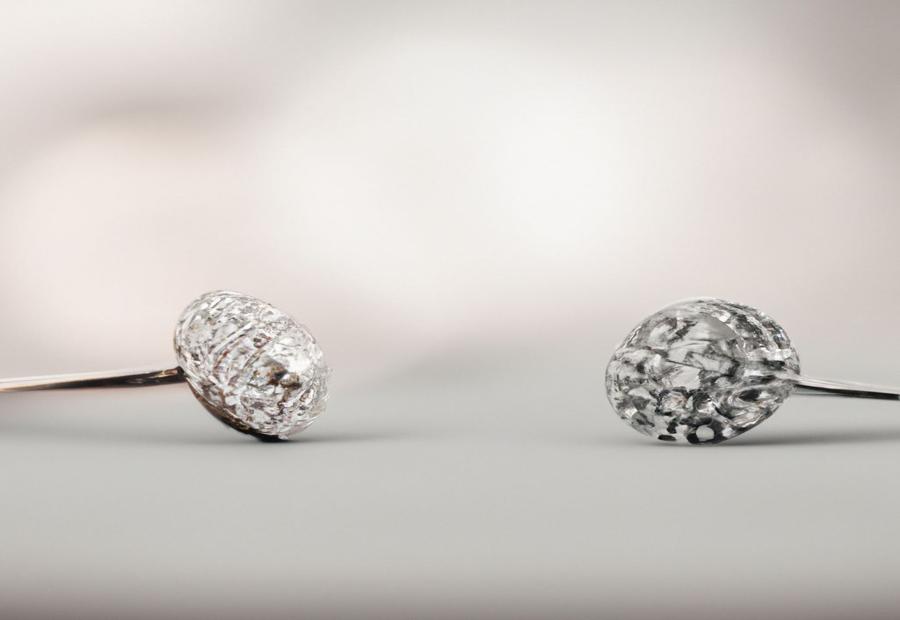
Photo Credits: Www.Lab-Grown-Diamond-Earrings.Com by Donald Lee
When it comes to the cost of lab grown diamonds versus natural diamonds in earrings, there are several factors to consider. In this section, we will explore the key aspects that impact the cost of both types of diamonds. We’ll also examine the concept of value for money in relation to lab grown and natural diamonds, shedding light on the potential benefits and drawbacks of each option.
Factors Affecting Cost
Various aspects determine the cost of lab grown diamonds in the market. These factors impact the overall pricing and value for money of lab grown diamonds.
The table below outlines some of the key factors affecting the cost:
| Factors Affecting Cost |
|---|
| Crystallised Carbon Structure |
| Chemical Compositions |
| Control and Consistency in Lab Grown Diamonds |
Lab grown diamonds with a well-defined crystallised carbon structure cost more. This is due to their better quality and visual appeal. The chemical compositions also contribute to the cost. Certain elements or impurities can affect the clarity, color, and brilliance of the diamond.
Control and consistency of the production process also affects the cost. Diamonds with high-quality standards and strict control measures cost more than those with less stringent processes.
These factors are not exhaustive. Market demand, supply chain factors, and brand reputation also have an influence on diamond prices. By assessing these factors collectively, customers can make informed decisions about which lab grown diamond gives them the best value for their investment.
Lab grown diamonds may save you money, but will they make your earrings look any less stunning?
Value for Money
Lab grown diamonds are great for those looking for value for money. As they are made in controlled conditions, they possess consistent quality and purity. Their assessment follows the same standards as natural diamonds, and their production process is cheaper, making them more affordable.
Also, one can own a diamond with similar characteristics to natural diamonds at a lower price, providing good value for money.
Furthermore, lab grown diamonds have an ethical and environmental benefit as they don’t require mining.
Choosing lab grown diamonds can increase the value for money aspect of the purchase, due to their ethical and environmental advantages.
Moreover, their investment potential is an extra factor to consider when buying lab grown diamonds, as they may appreciate in value over time, adding further to their value for money.
However, price may still vary depending on color grading and size. Therefore, it is important to take these into account when making a decision.
Lab grown or natural, diamonds are like people – they come in different colors, it’s all about personal preference.
Color Variation Comparison
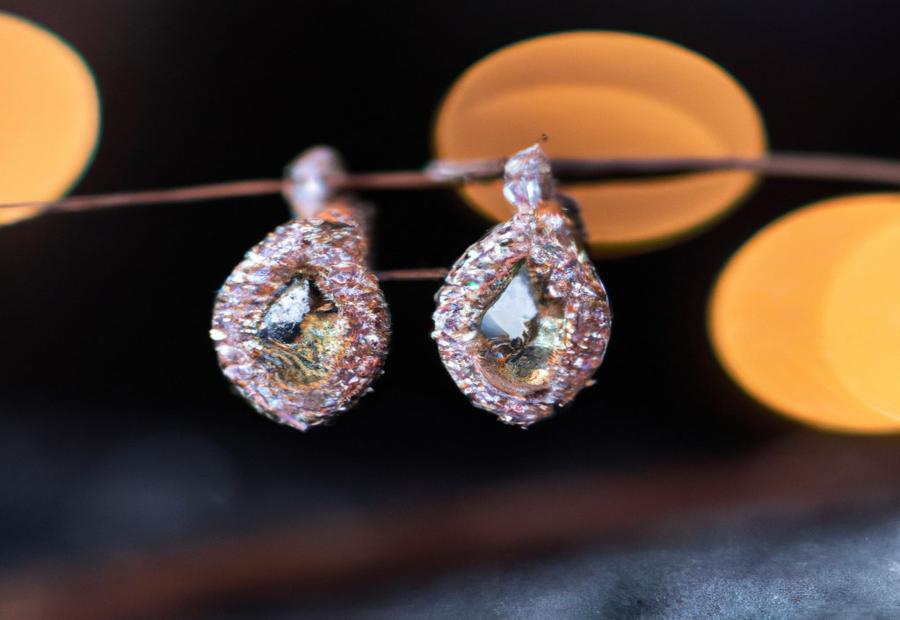
Photo Credits: Www.Lab-Grown-Diamond-Earrings.Com by Noah King
When it comes to comparing lab-grown diamonds with natural diamonds in earrings, one important aspect to consider is the variation in color. In this section, we will explore the color grading differences between the two types of diamonds and delve into how personal color preferences play a role in the decision-making process. So, let’s dive into the captivating world of diamond colors and discover the unique factors that shape our preferences when it comes to choosing the perfect pair of earrings.
Color Grading
Lab grown diamonds come in a plethora of colors, which are analysed using standardized grading scales, such as GIA. This scale ranges from D – colorless – to Z – light yellow or brown.
Experts use special lighting and comparison stones to get the exact color grade. This grade is very important to determine the value and demand of the diamond – higher grades mean more desirable diamonds.
In some cases, a letter grade is also assigned to note the presence of any undertones in the diamond. This helps buyers to choose what they prefer.
Accurate and consistent color grading helps buyers to make informed decisions when purchasing lab grown diamonds.
Color Preferences
Lab-grown diamonds come with a range of colors to choose from. They use the same color grading system as natural diamonds. From D (colorless) to Z (light yellow or brown).
Some customers prefer colorless diamonds, while others may like a hint of color. Gemologists check the body color and overtone to determine the grade.
Lab-grown diamonds provide more options to suit personal style. Plus, they don’t rely on mining practices or natural occurrences. So customers can pick the exact shade and hue they want, and create unique pieces.
Assessing value can be difficult, but with lab-grown diamonds, you know the shine is real.
Assessing Value
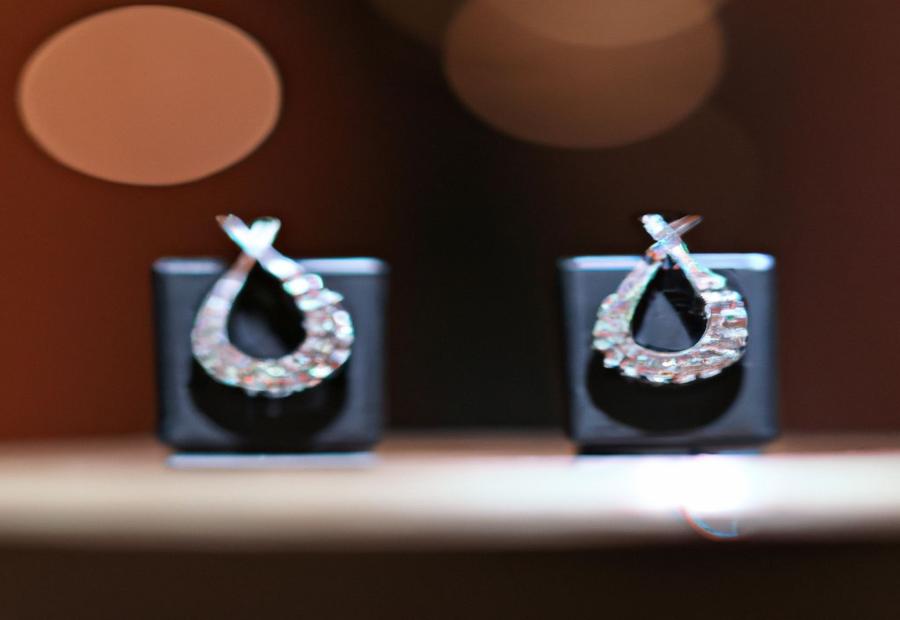
Photo Credits: Www.Lab-Grown-Diamond-Earrings.Com by John Rivera
When it comes to assessing the value of lab grown diamonds compared to natural diamonds in earrings, there are a few key factors to consider. Understanding these factors can help you make an informed decision about the investment potential of your diamond earrings. So, let’s dive into what makes lab grown diamonds unique and explore the factors that contribute to their value. Plus, we’ll discuss the investment potential that these diamonds hold.
Factors to Consider
Gaining a good grasp of the aspects to look at when rating the value and worth of lab-grown diamond earrings is aided by analysis of these factors using a table.
The crystal structure and chemical makeup of lab-made and natural diamonds can be compared to note their likenesses and differences. Lab-grown diamonds have a similar crystal structure to natural diamonds, making them look alike. But, the chemical compositions may differ due to varying growth conditions.
Their quality and purity are important in valuing diamonds. Lab-grown diamonds come with control and consistency in quality because they’re made in controlled settings. On the other hand, assessing the quality and purity of natural diamonds is more subjective as they are affected by varied natural factors.
Cost is a major concern for many buyers. Factors that affect the cost of lab-grown and natural diamonds include production methods, market demand, rarity, and brand reputation. Lab-grown diamonds are usually cheaper since production is controlled. Still, rare or high-quality natural diamonds cost more.
Color variation boosts a diamond’s uniqueness and value. The color grading system allows buyers to objectively look at the color intensity of lab-grown and natural diamonds. Personal preferences can also come into play.
Analyzing investment potential entails considering factors like market trends, customer demand, rarity, and long-term value retention. Natural diamonds have historically kept their value because of scarcity. However, as lab-grown diamonds become accepted and popular, their investment potential may also increase.
Investment Potential
Lab grown diamonds offer a unique investment opportunity. Their consistent quality and purity are produced under controlled conditions. Quality assessment and testing processes are done to meet industry standards. This makes them a reliable choice.
Diversifying your portfolio with lab grown diamonds is promising. Demand is increasing for ethical alternatives to natural diamonds. This can raise their value over time. Plus, they are cost-effective compared to natural diamonds. They have similar physical appearance and characteristics, making them good for long-term investments.
Therefore, lab grown diamonds have potential for financial returns and ethical value. To ensure success, research reputable manufacturers and retailers. That way, you can acquire high-quality stones with greater potential for appreciation.
Conclusion
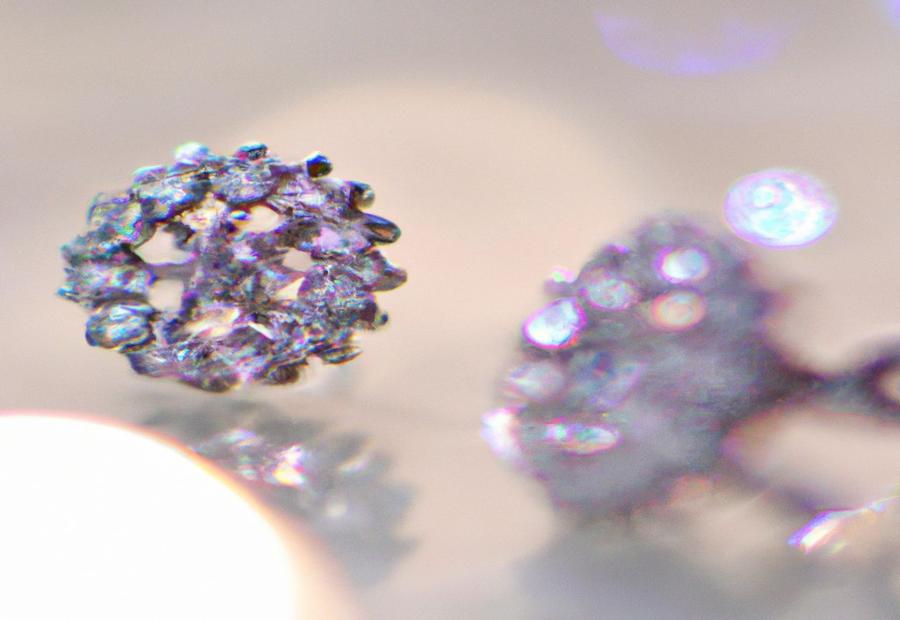
Photo Credits: Www.Lab-Grown-Diamond-Earrings.Com by George Green
Lab grown diamonds can look just like natural ones in earrings. Technology has made it so that both types have the same carbon crystal structure. This means they have the same sparkle and beauty.
Plus, lab grown diamonds are ethical and sustainable. So, no matter which type of diamond is used for earrings, they will look the same. Lab grown diamonds make a great choice for those wanting to be ethical and sustainable while still having beautiful earrings.
Some Facts About Lab Grown Diamonds vs. Natural Diamonds in Earrings:
- ✅ Lab grown diamonds and natural diamonds look identical when set in earrings and cannot be distinguished with the naked eye. (Source: Team Research)
- ✅ Both lab grown diamonds and natural diamonds can be used in earrings and offer the same level of beauty and sparkle. (Source: Team Research)
- ✅ Lab grown diamonds in earrings have the advantage of being more affordable compared to natural diamonds, allowing for larger carat sizes or higher quality stones within the same budget. (Source: Team Research)
- ✅ Lab grown diamonds in earrings have a lower environmental impact compared to natural diamonds, as they are created using less energy and resources. (Source: Team Research)
- ✅ Both lab grown diamonds and natural diamonds can be evaluated based on the 4C’s (cut, color, clarity, and carat weight) to determine their quality and value in earrings. (Source: Team Research)
FAQs about Do Lab Grown Diamonds Look Different From Natural Diamonds In Earrings?
Do lab grown diamonds look different from natural diamonds in earrings?
Lab grown diamonds and natural diamonds look very similar to the naked eye and cannot be distinguished without the help of a microscope. Whether set in earrings or any other piece of jewelry, lab grown diamonds have the same visual characteristics as naturally mined diamonds.
Are lab grown diamonds cheaper compared to naturally mined diamonds?
Yes, lab grown diamonds are generally more affordable than naturally mined diamonds. Lab grown diamonds can be up to 40% cheaper, allowing buyers to choose a larger carat or higher quality diamond within their budget.
Do lab grown diamonds have the same origin as naturally mined diamonds?
No, lab grown diamonds have a different origin compared to naturally mined diamonds. Lab grown diamonds are created in a laboratory setting using advanced technology, while natural diamonds are formed deep within the Earth over millions of years.
What is the ethical impact of choosing lab grown diamonds in earrings?
Choosing lab grown diamonds in earrings can have a positive ethical impact. The process of creating lab grown diamonds can use fewer energy and resources compared to mining natural diamonds, making them a more sustainable choice. Additionally, lab grown diamonds eliminate the concerns of unethical mining practices often associated with naturally mined diamonds.
Can lab grown diamonds be mistaken for cubic zirconia or other look-alike diamonds?
No, lab grown diamonds should not be mistaken for cubic zirconia or other diamond alternatives. Lab grown diamonds have a different chemical composition compared to cubic zirconia, moissanite, or other simulated diamonds. They are 100% crystallized carbon, just like naturally mined diamonds.
How can one tell the difference between lab grown diamonds and natural diamonds in earrings?
To tell the difference between lab grown diamonds and natural diamonds in earrings, a microscope or advanced testing equipment is required. Lab grown diamonds do not contain small amounts of nitrogen like natural diamonds do, which can be detected under magnification. Moreover, lab grown diamonds often have higher purity and fewer defects compared to natural diamonds.

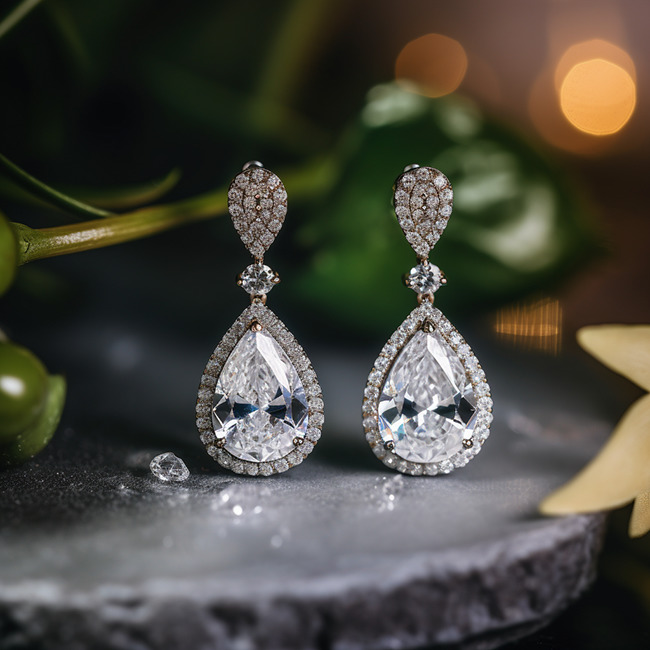
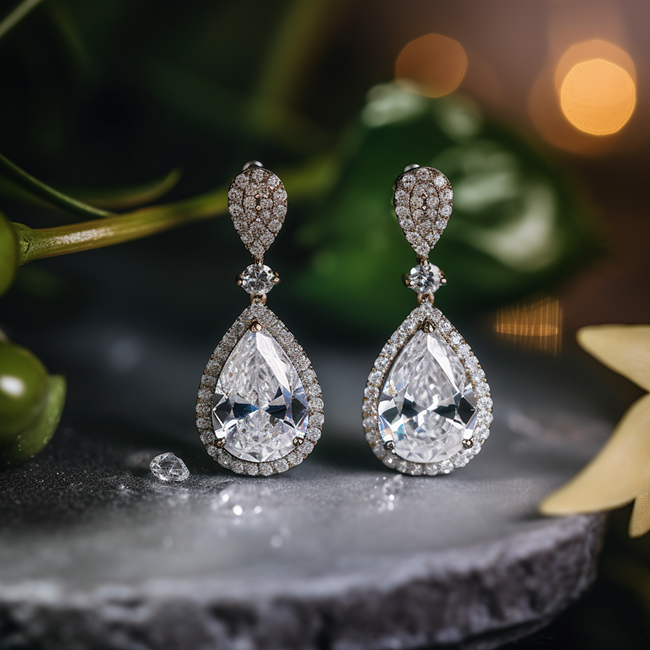
Leave a Reply